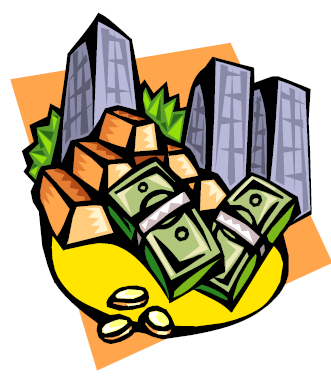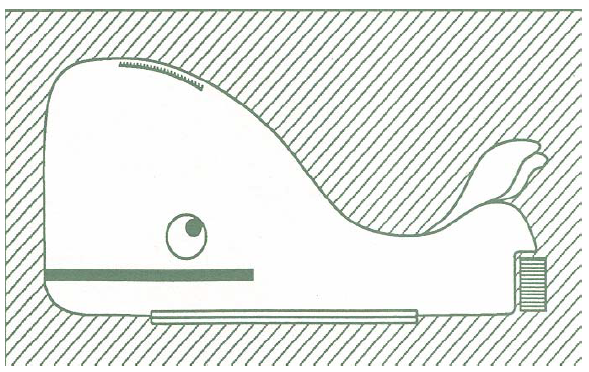Main Ideas
- Children use their money for spending, sharing and saving.
- To get the most from their money, children need a plan for using it.
- Saving means the most when it is done to reach a goal.
- Sharing money can help children learn to share in other ways.

Key Words
Goal
This is your objective; what you need or want. It is what you are working for.
Saving
Putting money away for something to be bought or used later.
Sharing
Giving away or letting others use part of our resources (money, material things, time, skills and ideas).
Interest
Money a financial institution pays you to use your money.
Like adults, children use money in three main ways. They spend it, share it or save it. This lesson will explore saving and touch on sharing; the next lesson will highlight spending and making a spending plan.
Understanding Saving
Piggy banks can introduce small children to the idea of saving money. There’s nothing wrong with forming the habit of dropping pennies into the bank, without thinking about what they will be used for. But saving takes on a whole new importance when you have a goal in mind. Saving for a goal can inspire children (and adults) to take control of their spending habits and plan for the future.
Any kind of planning means thinking ahead – having a clear idea of the future and the passage of time. This is something that children are not born with, and they learn it very slowly. Five- and 6- year-olds may use words like “month” and “year,” but they can’t really imagine what it means to live through those time periods. As their own memories get longer, it gets easier for them to think ahead and to understand what time means. But until they are 12 or even 15 years old, they may not understand time in the same way as adults do.
Saving for a goal may help children learn to plan in other ways. Elementary school children have a hard time understanding saving for college or future security. But, the 9-year-old who wants a baseball bat begins to understand the importance of putting aside money each week to have enough for a purchase later on. Older youth can learn to save for clothing, electronics, vacations and college.
When your children have gained some experience in handling money, it is probably time for them to open a savings account. Choosing a bank or other savings institution can teach them a lot about the world of money. The concept of earning interest – making your money “grow” – is an important one. Help your children comparison shop for a good interest rate.
Most financial institutions welcome younger customers, since they will be the customers of the future. These organizations may have special leaflets and other information for youngsters or first-time savers.
Helping children learn to save for specific things can be a valuable experience. They will learn that if they don’t fritter away their money on many small purchases, they can afford more expensive things later. When children begin setting goals, be sure you guide them, but do not set goals for them.

Sharing
Teaching a child to give and share has a value beyond the world of money. Sharing develops thoughtfulness. Preschoolers learn their first lessons in sharing as they exchange or share toys and personal possessions with family members and friends.
Remember that children learn by example. When children see parents and older brothers and sisters sharing their resources, it becomes a natural behavior for them. Encourage children to share time, skills and ideas, not just money and material things.
Encourage children to contribute to community charity projects or other worthwhile endeavors. This helps develop a concern for the welfare of others, beyond the familiar circle of family and friends.
Things To Do
Family
Plan a family outing or vacation. Figure out how much it will cost and plan how to save the money. Let all family members work together to reach the goal.
Visit different financial institutions – banks, credit unions and savings and loans. Bring back information on different kinds of savings accounts and compare them at a family meeting.
Play the stock or mutual fund market. Using the Business/ Investing section of the newspaper, have each family member select $100 of stocks and/or mutual funds. For a set amount of time (perhaps two weeks to four weeks), have everyone track the ups and downs of the stocks and mutual funds selected. At the end of the time period, calculate how much each person’s selected portfolio is worth. The winner is the person who gained the most value in his/ her portfolio.
Preschoolers
Make a bank. Talk about why you put money in a bank. See the directions for making a whale bank at the end of this lesson, or make up your own design using different boxes, cans or other containers.
Have children choose toys they no longer play with or clothes that are too small and then go with you to take them to a neighbor, a homeless shelter or charitable organization.
6- to 12-Year-Olds
Let each child open a savings account. Some children fear they are giving away their money when it’s put in a savings account. Be sure the children understand that they are not losing their money when they give it to the bank or other financial institution. Explain that the money is going to grow (interest) and that they’ll have more when it’s taken out. Make plans for gifts for birthdays, holidays or other special occasions. Help children understand that sharing can be one of the goals of saving.
Help children understand that they have other resources besides money, including their time, skills, ideas and effort. Show them how they can use these resources to reach goals. For example, they might use their time and skills to make gifts, such as a bank for a younger brother or sister.
Have a “Making My Dreams Come True” session at a family meeting. See directions at the end of this lesson.
Teenagers
Help teenagers find information about savings and investments beyond the savings account. Check out MyMoney.
Encourage long-range planning. You can also use the “Making My Dreams Come True” activity with teenagers.
As teens mature, encourage them to broaden their ideas of sharing. For example, encourage them to share by volunteering their time and effort for community projects.
Teenagers can learn by evaluating their own actions – failures as well as successes. Encourage them to ask themselves questions such as:
- What did I do?
- What were the results?
- What could I have done differently?
- What probably would have happened then?
- What choices do I have now?
- What are the possible results?
Tips for Parents
- Your example is the best teacher for your children.
- “Saving for a rainy day” doesn’t mean much to a child. It’s much easier for them to save for a definite goal that they can picture.
- Goals need to be realistic. Consider the child’s age and maturity.
- Money will add up faster if a child learns to save regularly, no matter how small the sum may be.
- Remember that the piggy bank is for the child. If you borrow money out of your child’s bank, be sure to repay it promptly. Also, consider paying your child interest for the use of the money.
- Because so much of the world is new to children, and because it’s hard for them to imagine the future, children are great “impulse buyers.” They often run into things unexpectedly that they want very much, and are tempted to spend money that they were saving for a different goal. If this is a problem for your children, encourage them to make one of their goals a “cushion” – a sum of spare money that is not earmarked for any other goal – so they can use it for whatever comes up.
- Children usually learn better from praise and encouragement than from criticism and scolding. Talk about what they are doing right and try to build on it, instead of just looking for what they are doing wrong.
Making My Dreams Come True
- Ask the children to list their wants, starting with what they want the most.
- Have them estimate the cost of each one and plan how much money per week to save for it.
- Use a cloud picture like this one for each child.
- Write, draw or paste a picture of the most desired item on the biggest cloud, with the date the child believes the dream can come true. Put other wants on other clouds.
- At later family meetings, you can talk about how well the plans worked and what could be done better next time.

Make a “Whale Bank”
- Use a clean plastic spray bottle or one with a similar shape as pictured in the illustration.
- On the curved side of the container, cut a 1 1/4-inch x 1/8-inch slit for coins.
- Make a base using seven ice cream sticks. Glue five sticks edge to edge, then glue a stick flat on top of stick one and another on top of stick five. This will keep the bank from rolling over. Glue flat side of container to base.
- Draw eyes on paper, then color, cut out, and glue them onto the sides of the container. Whale’s mouth can be drawn on with black pen, or cut an 11-inch x 1/8-inch strip of tape and tape on.
- Fold felt or paper in half and cut out tail shape. Glue tail onto neck of bottle.

Additional Resources
- Thrive by Five™: Teaching your Preschooler About Spending and Saving.
- Financial Champions Academy Web Game. Participants enroll and learn how to make important financial decisions on: whether to open a bank account, which credit compass to purchase, and where to save money. Graduating from the academy depends on how well the participant learns about money choices.
- SmithBarney “Young Investors Network.”
Koehler, C., Crites, A., Behal, P., and Horton, S.
2006,
Money Sense for Your Children - Saving and Sharing,
Extension | University of Nevada, Reno, FS-06-95


